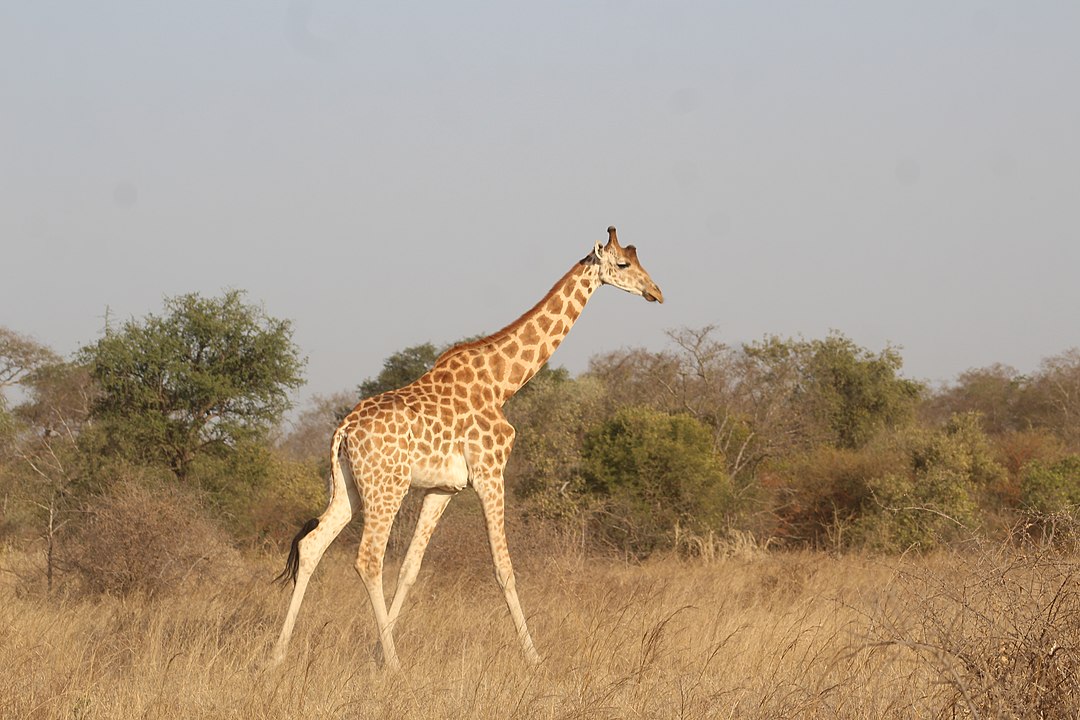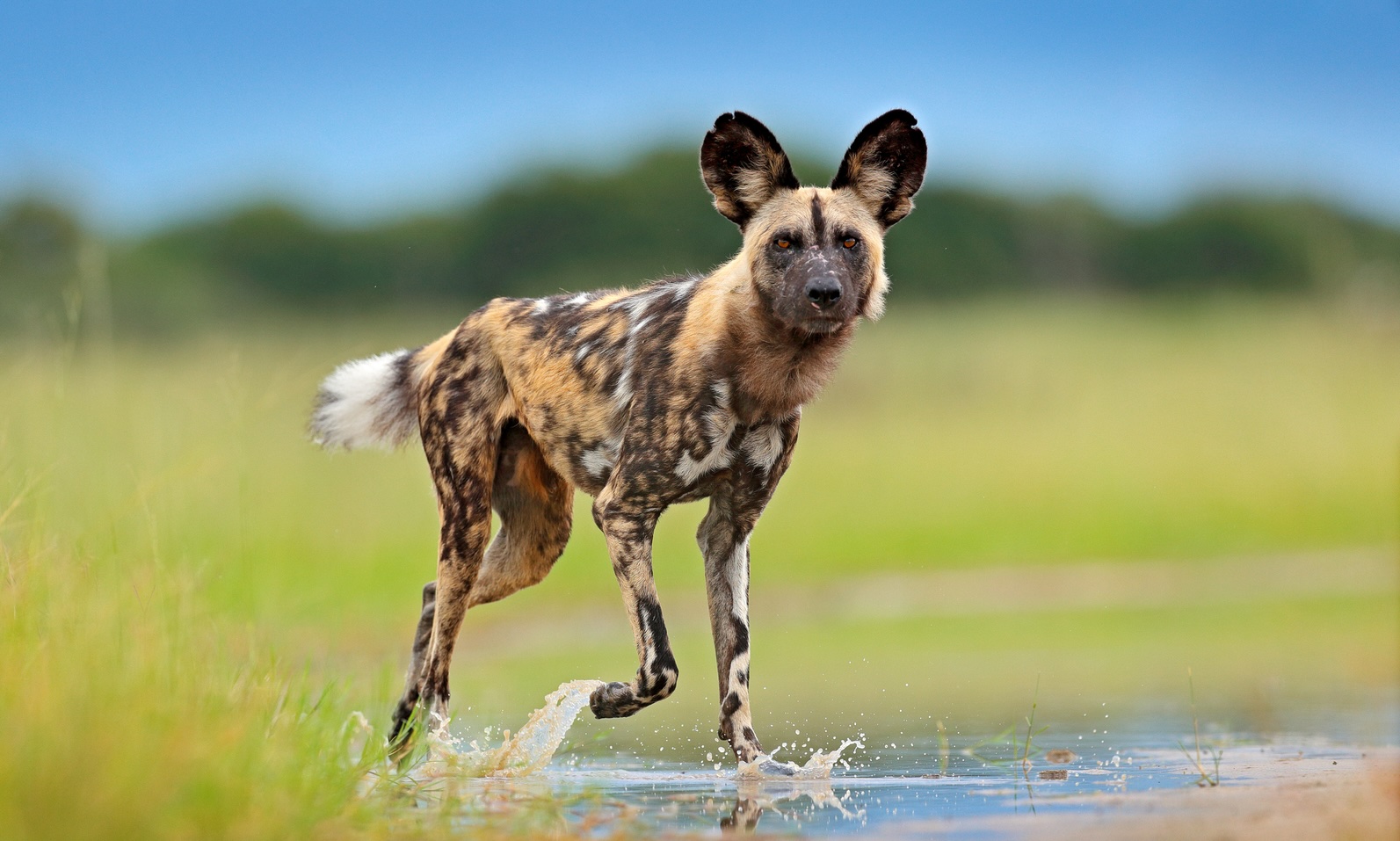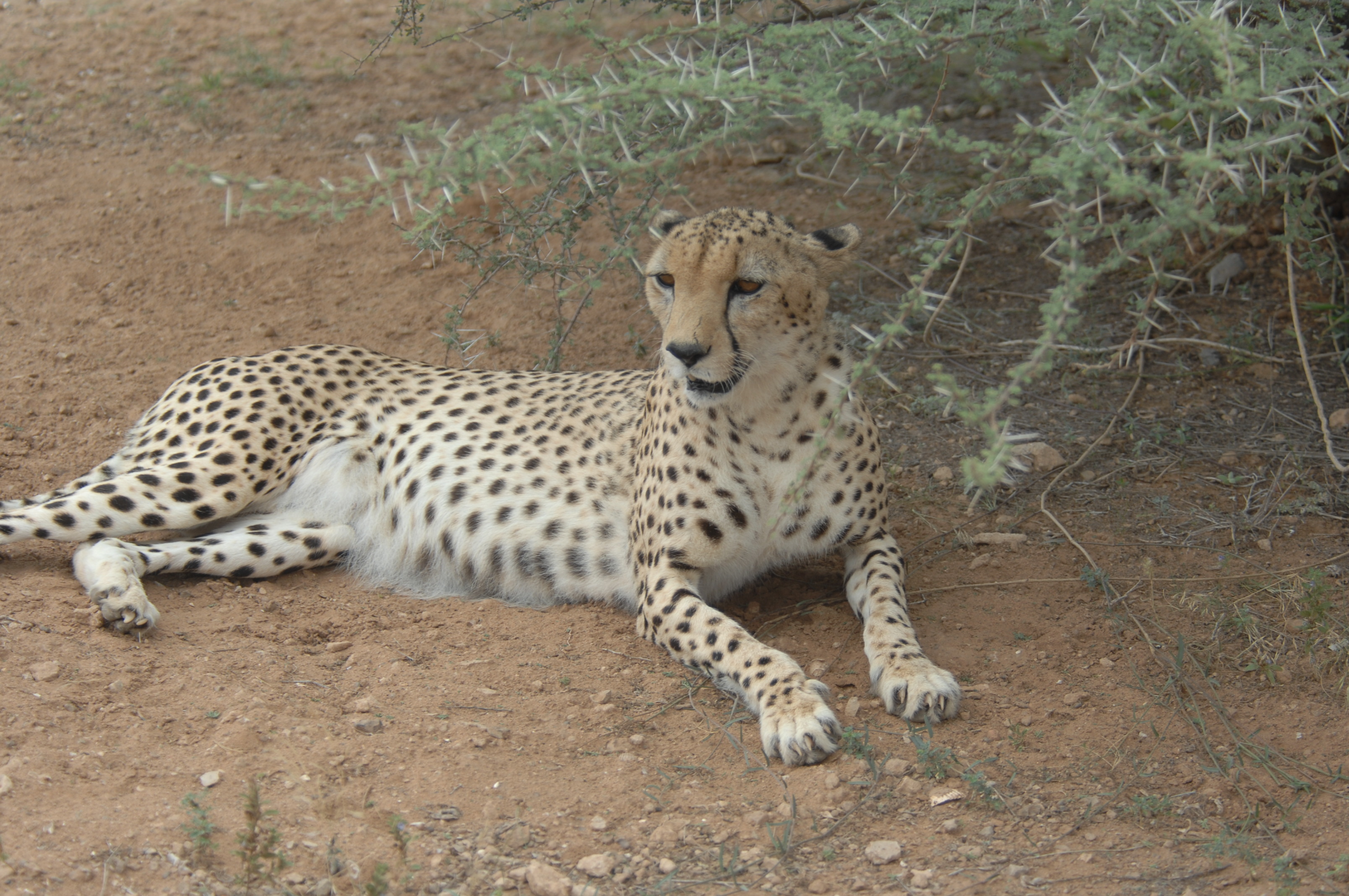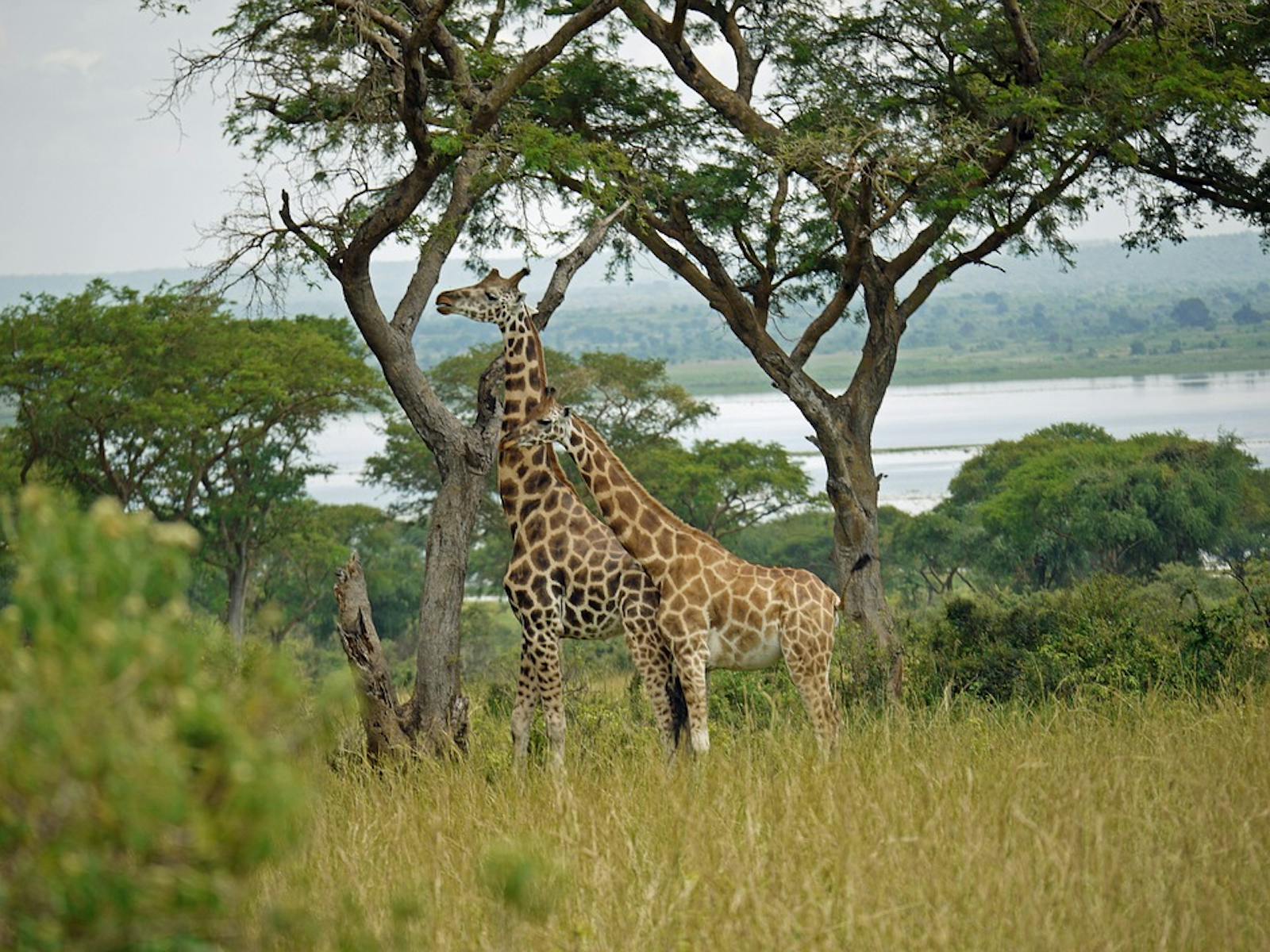East Sudanian Savanna
The ecoregion’s land area is provided in units of 1,000 hectares. The conservation target is the Global Safety Net (GSN1) area for the given ecoregion. The protection level indicates the percentage of the GSN goal that is currently protected on a scale of 0-10. N/A means data is not available at this time.
Bioregion: West Sudanian Savanna (AT20)
Realm: Afrotropics
Ecoregion Size (1000 ha):
106,214
Ecoregion ID:
43
Conservation Target:
30%
Protection Level:
8
States: Nigeria, Cameroon, Chad, Central African Republic, Sudan, South Sudan, Uganda, Democratic Republic of Congo, Ethiopia, Eritrea
The black rhinoceros will be re-introduced in Chad after being extirpated from this ecoregion decades ago along with the northern white rhino. The ecoregion is a hot, dry and wooded savanna, south of the Sahel. It is recognizable by the tall elephant grass where many large mammals are found. Herds of elephants roam these savannas in Chad, Central African Republic and Cameroon. However, their numbers are threatened due to high poaching pressures.
_male-CC-Charles%20J%20Sharp-2016.jpg)
The flagship species of the East Sudanian Savanna ecoregion is the giant eland. Image credit: Charles J Sharp, Creative Commons
The ecoregion lies south of the Sahel in central and eastern Africa, and is divided into a western block and an eastern block by the Sudd Flooded Grasslands ecoregion. The western block stretches from the Nigeria/Cameroon border through Chad and the Central African Republic to western Sudan. The eastern block is found in eastern Sudan, Eritrea, and the low-lying parts of western Ethiopia, and also extends through South Sudan, into north-western Uganda, and marginally into the Democratic Republic of Congo around Lake Albert.
The ecoregion is flat, mainly lying between 200 m and 1,000 m in altitude. The climate is tropical and strongly seasonal. The annual rainfall is as high as 1,000 mm in the south, but declines to the north with only 600 mm found on the border with the Sahelian Acacia Savanna. Almost all rainfall occurs in a single rainy season from April to October, during which time large areas of southern Chad and northern parts of the Central African Republic become inundated and inaccessible.

Giraffe. Image credit: Fatayaka, Creaitve Commons
During the dry season the ground dries out, most of the trees lose their leaves and the grasses dry up and may burn. Typical trees in the western block of the ecoregion include Anogeissus leiocarpus, Kigelia aethiopica, Vachellia seyal, and species of Combretum and Terminalia.
In the eastern block, Boswellia papyrifera, Lannea schimperi and Stereospermum kunthianum also dominate the woody vegetation. The solid stemmed bamboo Oxytenanthera abyssinica is prominent in the western river valleys of Ethiopia. Dominant grasses include tall species of Hyparrhenia, Cymbopogon, Echinochloa, Sorghum, and Pennisetum.
Both blocks of the ecoregion closely resemble the West Sudanian Savanna ecoregion in habitat and species composition. The East Sudanian Savanna has low rates of faunal endemism, with only one strictly endemic mammal (Gounda mouse), and two strictly endemic reptiles (Moila snake and Wilson’s snake-eyed skink).
Five bird species are considered endemic, including two strict endemics, Reichenow's firefinch and Fox’s weaver. There are approximately 2,750 species of higher plants within the entire Sudanian regional centre of endemism, and roughly one-third are most likely endemic to this ecoregion. However, as the ecoregion is vast, plant endemism per unit area is low.
Threatened mammal species include large herds of elephant in Chad and Central African Republic, wild dog, cheetah, and lion. The eastern giant eland still survives in good numbers in the Central African Republic, especially in the western regions of the country, out of reach from Sudanese poachers. Giant eland are less susceptible to poachers than other more sedentary and less wary antelope species, but have been almost completely eliminated from Sudan.

African wild dog (Lycaon pictus) portrait in Zambia. Image credit: © Ondřej Prosický | Dreamstime
The original wooded savanna habitat has been significantly reduced, although to a lesser extent than in the West Sudanian Savanna, primarily due to the lower human population density. There are a good number of protected areas, however, many are not adequately enforced or policed. They include Dinder National Park in Sudan, Radom and Boma National Parks in South Sudan, as well as Zakouma National Park in Chad, Manovo-Gounda-Saint Floris and Bamingui-Bangoran National Parks in Central African Republic, Gambella National Park in Ethiopia, and Mount Kei Wildlife Sanctuary in Uganda.

North African cheetah.Image credit: Joe Zuccaro, Creative Commons
The habitats of the ecoregion are principally threatened by seasonal "shifting" cultivation, over-grazing by livestock, cutting trees and bushes for wood, burning woody material for charcoal, and uncontrolled wild fires. Climatic change is a further threat, exacerbating the impacts of human activities, as the ability of the ecosystem to recover from overuse is reduced when there is little rainfall.
The main threats to the species of the ecoregion come from overgrazing, for example in Dinder National Park, and in the case of large animals, over-hunting for meat or poaching. Poaching of wildlife, for example elephants, is particularly pronounced in politically unstable areas such as South Sudan.
Priority conservation actions for the next decade.
- Strengthen and implement trans-boundary management of anti-poaching measures, for example on the CAR-Chad-Cameroon borders;
- Distribute new water sources in a way that avoids cattle overgrazing;
- Eestore degraded ecosystems to enhance carbon stocks and combat desertification.
-
-
Citations
1. Burgess, N., Hales, J.A., Underwood, E., Dinerstein, E., Olson, D., Itoua, I., Schipper, J., Ricketts, T. and Newman, K. 2004. Terrestrial ecoregions of Africa and Madagascar: a conservation assessment. Island Press.
2. African Development Fund. 2013. Central Africa Biodiversity Conservation Programme Protecting Central Africa’s Elephants Appraisal Report. Africa Development Fund.
3. Ministry of Environment, Natural Resources and Physical Development. 2015. National Biodiversity Strategy and Action Plan 2015-2020. Sudan: Republic of Sudan.
4. White, F. 1983. The vegetation of Africa, a descriptive memoir to accompany the UNESCO/AETFAT/UNSO Vegetation Map of Africa (3 Plates, Northwestern Africa, Northeastern Africa, and Southern Africa, 1:5,000,000). UNESCO, Paris. -
Cite this page: East Sudanian Savanna. Ecoregion Snapshots: Descriptive Abstracts of the Terrestrial Ecoregions of the World, 2021. Developed by One Earth and RESOLVE. https://www.oneearth.org/ecoregions/east-sudanian-savanna/
-




